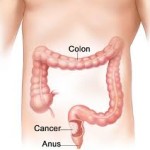 Hemorrhoids are another form of varicose veins that occurs inside, or protruding outside, of the rectum. Varicose veins develop when the one-way valves in the veins are damaged and allow the blood to pool. This pooling causes the veins to become distended, causing itchiness, pain, discomfort and bleeding. This condition also doesn’t allow the body to remove toxins and waste products from the cellular structure effectively. (1)
Hemorrhoids are another form of varicose veins that occurs inside, or protruding outside, of the rectum. Varicose veins develop when the one-way valves in the veins are damaged and allow the blood to pool. This pooling causes the veins to become distended, causing itchiness, pain, discomfort and bleeding. This condition also doesn’t allow the body to remove toxins and waste products from the cellular structure effectively. (1)
In the case of hemorrhoids, the pressure builds when you strain to have a bowel movement, sit on the toilet for long periods of time, sit in the office for long periods of time or strain to lift heavy objects. As with varicose veins in the legs, there is also a genetic predisposition to the development of these varicose veins in the rectum. Those who know that family members suffer from this condition should take special precautions to prevent the development of hemorrhoids.
There are three different types of hemorrhoids depending upon the location of the inflamed and swollen vein. There are internal hemorrhoids which involve the veins inside the rectum and are not as painful as those which extrude. They may bleed painlessly. A prolapsed hemorrhoid can stretch until they bulge outside the anus. It can go back inside the rectum on its own or you can gently push it back inside. An external hemorrhoid involves the veins that are outside the anus and are often itchy, painful and sometimes will crack and bleed.
Those who have a hemorrhoid may feel a tender lump on the edge of the anus or see blood on the toilet paper or in the toilet after a bowel movement. Many will find relief from using preventative measures, such as taking warm baths, using moist towelettes or ice packs to relieve the swelling. Your doctor can prescribe a steroid cream or suppository to help reduce the inflammation and pain.
One of the primary ways of preventing the development of hemorrhoids is to reduce the stress and strain of having a bowel movement. This means producing soft stool that can be excreted easily. You do this using several methods in combination.
 Eat more fruits and vegetables to increase the high-fiber content of your diet. This helps to soften the stool and increase the bulk. This reduces straining that causes hemorrhoids or worsens the symptoms from already existing hemorrhoids. If you are not used to eating fiber in your diet you should introduce it slowly and gradually to reduce the amount of gas that your bowel will produce.
Eat more fruits and vegetables to increase the high-fiber content of your diet. This helps to soften the stool and increase the bulk. This reduces straining that causes hemorrhoids or worsens the symptoms from already existing hemorrhoids. If you are not used to eating fiber in your diet you should introduce it slowly and gradually to reduce the amount of gas that your bowel will produce.
People who are used to eating fiber have no difficulty with increasing their fiber but intestines that aren’t used to digesting the products they are supposed to may increase the amount of gas produced until the body is able to manufacture enough of the right enzymes to completely digest the food. This is a natural process and high fiber should NOT be stopped just because you have a bit of gas.
Drink plenty of fluids during the day. Most individuals should drink between 7 to 9 eight ounce glasses of water each day unless they live in a hot climate and should then drink more. Fluids help to keep the stool soft and the body from retaining water.
Go to the bathroom as soon as you feel the urge to have a bowel movement. Don’t hold it because the stool can become dry and harder to pass. This causes a person to strain while stooling, which in turn results in hemorrhoids. When you strain, or hold your breath when passing stool, it creates a greater pressure in the veins in the lower rectum. This straining will increase the damage to the veins and the potential to develop hemorrhoids.
Sitting on the toilet, to read or relax, will also cause an increased pressure in the veins which in turn results in hemorrhoids. This same situation happens when sitting in a chair for long periods of time. For this reason it is important to use the toilet only to have a bowel movement and get up immediately. Avoid sitting for long periods of time in a chair. If you are able to get up, even to stand and stretch next to your chair, do so at least every 20 minutes. While this will help reduce the potential to develop hemorrhoids, it will also reduce the potential for varicose veins in the legs and increase your productivity by increasing your blood flow.
If you don’t get enough fiber in your diet consider a fiber supplement. The FDA suggests 20-35 grams of fiber in your diet each day. (2) Over the counter supplements can improve the overall symptoms of hemorrhoids and help to keep the stool soft and regular. If you choose to use these supplements you MUST drink at least 8 glasses of water each day or the supplement will make the constipation worse.
References:
(1) National Digestive Diseases Information Clearinghouse: Hemorrhoids
digestive.niddk.nih.gov/ddiseases/pubs/hemorrhoids/
(2) Dietary Reference Intakes for Energy, Carbohydrate, Fiber, Fat, Fatty Acids, Cholesterol, Protein and Amino acids
http://www.iom.edu/Global/News%20Announcements/~/media/C5CD2DD7840544979A549EC47E56A02B.ashx


Leave a Reply